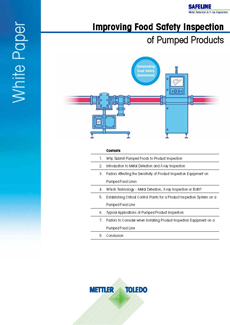Pipeline Applications
METTLER TOLEDO Safeline provides pipeline x-ray inspection solutions that are specifically designed to inspect pumped food products such as meat and poultry as well as slurries, semi-solids and fluids, at any stage in processing or before final packaging. Applications typically include sauces, jams, minced meat, molten chocolate and dairy spreads, as well as products that cannot be sieved - for example, textured fruit purées and yoghurts containing fruit chunks.






